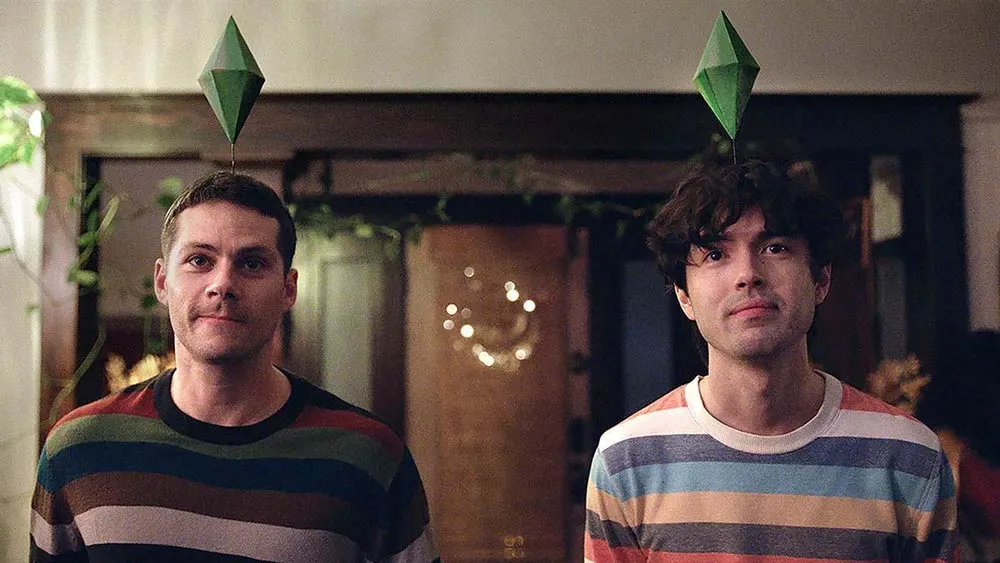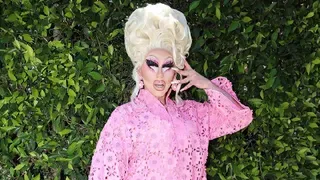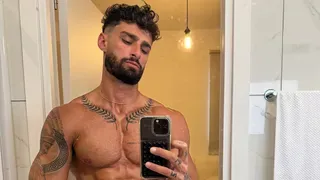March 3, 2010
Photographic series explores "in-between" spaces of female identity and queerness
Kevin Mark Kline READ TIME: 5 MIN.
In a deliberate and distinct departure from digital, a series of large-format photographs will debut at Gallery Kayafas on March 4. Boston photographer and MassArt grad Jess Dugan used an eight-foot-tall 20x24 Polaroid camera (one of only five in the world) to produce "Coupled," a portrait series exploring queer relationships that have an association with female identity.
"My definition of who was eligible to be included were people who had some connection to a female identity," Dugan said. "For some of them, that meant that they were both female-identified; for some of them, that meant that they were transgender-identified in one way or another -- male-to-female or female-to-male. ...Everyone in the project has some type of a queer identity and some connection to a female identity."
Jess' involvement with the LGBT community extends back for years. "I definitely identify as being queer, and I identify as sort of gender-variant," Dugan said. While she now uses female pronouns, Dugan used to prefer people refer to her using male pronouns. "I have been an active part of the trans community for a long time, but I don't really like identifying as trans because I feel like I sort of occupy an ambiguous space," she said.
"I kind of embody this in-between space, but in my daily life and in my professional life, I'm probably seen as being female and being a dyke of some kind. I sort of border the lines between the two communities, as I imagine you could tell the project does, too."
The subjects of "Coupled" are not models; they're real people who chose to be involved with the project for many different reasons, including the political. Jess timed her project to include LGBT couples in the months and years following the legalization of marriage equality in Massachusetts.
Most meaningful, however, could be the feeling of community that emerged from the photo shoots. "The faces, styles, and energy of and between each person in the photographs are so authentic, and lend not only the physical manifestation of queer couples in our community, but also a poetic narrative of human relationships," Dani Fazio, one of Dugan's subjects, said. Fazio -- a former MassArt classmate of Dugan's -- and her wife Jen Joy posed for the shot "Dani and Jen." "This work proves to be important to our culture as we struggle for equality; it is a great representation of the relationships we work to protect," she said.
In "Coupled," Dugan posed her subjects against a deep red background, both people looking unsmiling into the camera. "It wasn't supposed to be a 'red is for love' type thing," Dugan said of her color choice. "I liked that it was bold. It's sort of an aggressive red in a way, but also kind of alludes to that love, Valentine's Day color. ...I wanted it to be really intense, really saturated." The striking background and careful lighting only serve to enhance the straightforward, powerful gazes of Dugan's subjects. They appear to the viewer first as couples and secondly as gendered, or in some cases ungendered, beings in human relationships that seem entirely accessible even to those outside of the project.
"I chose to do the same composition, the same background, the same lighting for each couple to really draw attention to them as people and also create this kind of repetition of framing so that the differences you're really noticing are the people themselves," she said.
In some frames, the gender of the subjects is obvious to the viewer. In other shots, however, the only sure fact that can be inferred about the subjects is their relation to each other; they are each, indeed, coupled.
"Part of what I like about [the series] is that you don't quite know who's who and what their story is," Dugan said. "Some of it you can get from the images, but some of it you might not know unless you knew the people."
Dugan started "Coupled" while she was still a student at MassArt, taking the shots in sets of five at a time with the massive Polaroid camera. "Actually doing the shoot is pretty entertaining because the camera's so large," Dugan said. "When the bellows are fully extended, it's like five feet between the lens and the ground glass, which is where the exposure is actually made, so what that means is you need a lot of light to have the correct exposure."
Six strobe lights illuminated both the background and the subjects for a split second while each exposure was made. "You go from being in complete darkness to this really intense burst of light," Dugan said. "It was a very unique situation; most people have never seen that kind of camera or sat for something like that." The unique format required the subjects to remain completely still while the exposure was made; an inch's movement would have created a blur.
"I was familiar with the 20x24 Polaroid camera," Fazio said, "but I overlooked that this was a foreign experience for Jen, and so she sat frozen, whispering questions to me about whether or not to smile. The lights were off for a moment, then a huge flash from the strobes, and Jen is now immortalized like a deer in headlights."
The permanence of the images captured by the Polaroid camera immortalized relationships as they existed in the split second the exposure was made. "Once you take a Polaroid, you can't really futz with it," Gunner Scott, executive director of the Massachusetts Transgender Political Coalition (MTPC) and subject of portrait "Gunner and Lee," said. "As a trans person, if I had had the photos done...now, at a different point in my transition, I think I would've been happier." Like Fazio, Scott was familiar with the large format camera, but still marveled at the experience. "It was a huge camera, and I think the most exciting or interesting thing was you were in a space that was dedicated to taking photographs with this type of camera."
The workspace and all that it encompassed -- the darkness, the waiting, the flash of light, and the finish -- resounded differently for nearly every participant, and for Jess herself. "This work moves people; it captivates us in a way that resonates personally, socially, and politically," Fazio said. "Being in these photographs makes me feel like my wife and I are sitting among these fascinating couples, and together we portray a unique impression of a community which is often overlooked or misrepresented in contemporary media."
Scott approached the work with concerns about the presumed gender of the participants. "I hope people don't assume that everyone in the series is female," Scott said. "I think it's [about] not making assumptions about the gender of the couple."
As for Jess, she thrived during the physical act of capturing the likenesses of such varied and individual subjects, and introducing them to such a rare and beautiful camera. "The part I found most meaningful," she said, "was actually during the photo shoots and sharing this process with people."
"Coupled" will open at Gallery Kayafas (450 Harrison Ave. Ste. 37, Boston) on Thursday, March 4. An opening reception will be held Friday, March 5, at 5:30 p.m. For more information, please visit www.jessdugan.com or e-mail [email protected].







